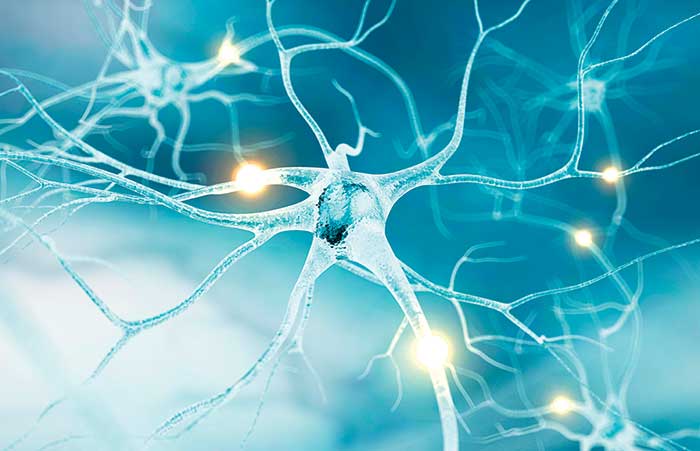
Electroceuticals, like pacemakers and cochlear implants, changed health care. Now, treatment potential is growing as researchers find new ways to use bioelectric med...
Could an old-school intervention provide a ground-breaking replacement to treat conditions, and even replace the need for certain pharmaceuticals? Not only is it possible, but it’s happening as the industry finds new ways to use bioelectronics, also known as electroceuticals.
Electroceuticals are devices that use the body’s electrical impulses or currents to treat conditions and illness. Sound far-fetched? It shouldn’t, because medicine has been using this approach for decades (think pacemakers and cochlear implants). Future applications are far broader in scope, and look to address many common chronic conditions impacting and regulated by the body’s nervous and immune systems. Add a growing body of research to an increasing technological ability to miniaturize electroceuticals, and the treatment potential grows.
How do electroceuticals work?
The key to understanding electroceuticals can be found in the body’s electrical networks, and understanding how those networks and impulses impact body functions and disease.
“Electrical impulses — action potentials — are the language of the body's nervous system. Virtually all organs and functions are regulated through circuits of neurons communicating through such impulses.” Nature International Journal of Science
Therefore, mapping the body’s neural networks and analyzing the signaling throughout those networks are key areas of research. This work is being pushed forward by the National Institutes of Health and its Stimulating Peripheral Activities to Relieve Conditions (SPARC) initiative, as well as drug companies like GlaxoSmithKline (GSK).
GSK is a pioneer in advancing the concept of a multi-disciplinary and collaborative public-private partnership approach. In addition to investing in research, GSK has also invested in start-up SetPoint Medical, and recently entered into a joint venture with Verily Life Sciences to form Galvani Bioelectronics.
All of this ongoing research and product development is working to address conditions such as:
- Wound and burn treatments
- Diabetes, heart disease, and hypertension
- Asthma, COPD, and sleep apnea
- Inflammatory diseases (e.g., Crohns), Irritable Bowel Syndrome (IBS), and rheumatoid arthritis
- Mental health conditions
- Pain management
Let’s take a look at a few key areas where advances are already occurring.
Vagus nerve stimulation
The nervous system, which includes the central and the peripheral nervous systems, runs throughout the human body. The vagus nerve, the longest nerve running from the brain down the spine, is involved with many functions, ranging from regulating the heart rate and blood pressure to digestion and beyond. Due to its size and importance, the vagus nerve has long been targeted for intervention via neurostimulation, also called neuromodulation.
Companies like LivaNova have targeted the vagus nerve to treat diseases like epilepsy and depression. Earlier this year, the Centers for Medicare & Medicaid Services (CMS) agreed to cover FDA approved vagus nerve stimulation (VNS) devices through Coverage with Evidence Development (CED) for treatment-resistant depression (TRD).
Going further, research done by Dr. Kevin Tracey, co-founder of SetPoint Medical, led to an even broader field of treatment when he discovered the role of the vagus nerve within the body’s immune and inflammatory response systems. This inflammatory reflex research opened up even more opportunities to understand the vagus nerve’s role in diseases such as Crohns and rheumatoid arthritis.
SetPoint Medical is already showing promising results in its proof-of-concept study for Crohns, and in June 2019, the Federal Drug Administration (FDA) approved an Innovative Health Solutions nerve stimulation device called IB-Stim to treat IBS pain. Electrocore is continuing its research on neurology and rheumatology conditions as well, but has already received FDA clearance for its gammaCore product to address cluster headaches.
Wound healing
Another application of electroceuticals is the use of electrical currents on the surface of the skin via wireless electroceutical dressings (WED). The FDA has approved WEDs, such as Vomaris’ product Procellera, for multiple years. These WEDs can be used in many ways, from treating skin ulcers in bedridden patients to treating those with severe burns.
Recent research and product development done by Xudong Wang of the University of Wisconsin – Madison and The Ohio State University (OSU) continue advancing WED applications. A study from OSU published in the Scientific Journal provided insight into how WEDs disrupt biofilm, which are small communities of microorganisms — including bacteria — held together and present on the skin. The biofilm is oftentimes a barrier to antibiotics or for the body’s own immune responses. By disrupting the biofilm, WEDs can promote faster wound healing.
Pain management
Now, more than ever, there is a push to find replacements for pharmaceuticals such as opioids. The use of electroceuticals creates a very promising substitute for managing episodic or chronic pain, and multiple companies have already developed electroceuticals to meet this need.
Medtronic’s Intellis platform includes neurostimulators for pain management. Stimwave has its StimQ Peripheral Nerve Stimulator (PNS) to address chronic pain by targeting the peripheral nerve. Abbott also has several options: BurstDR™ stimulation, which targets general lower extremity pain, and Dorsal Root Ganglion (DRG) stimulation, which is able to target pain specifically in the foot, knee, hip, or groin. And BioElectronics Corporation has multiple products to treat back, knee, and other musculoskeletal pain, as well as post-operative pain.
How we can help
While using electrical impulses in health care is not new, the emerging research and technological ability surrounding it creates new possibilities for treatment. As these and other innovations occur in health care and the market, CLA will keep you up to date to help you determine how new developments will impact both your organization and the industry as a whole.
